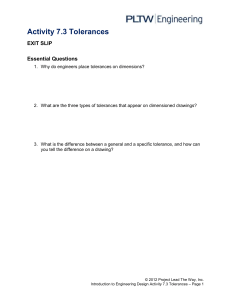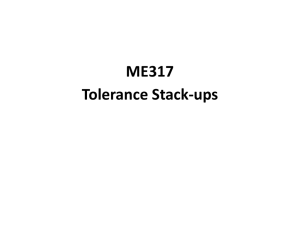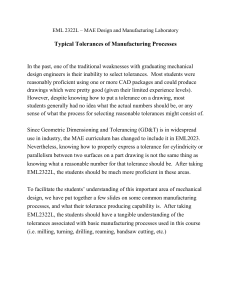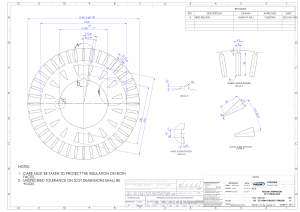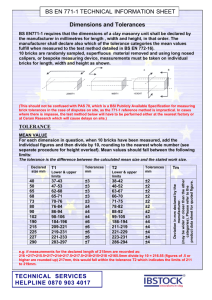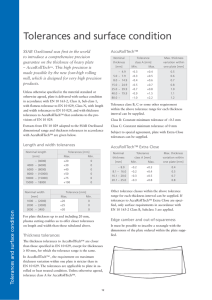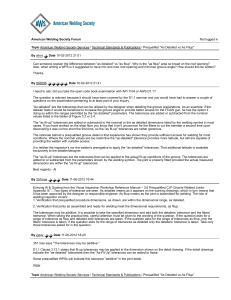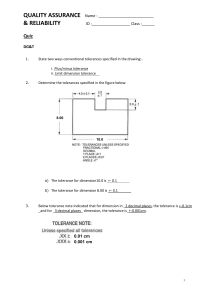Project-Tolerances-Guidance
advertisement
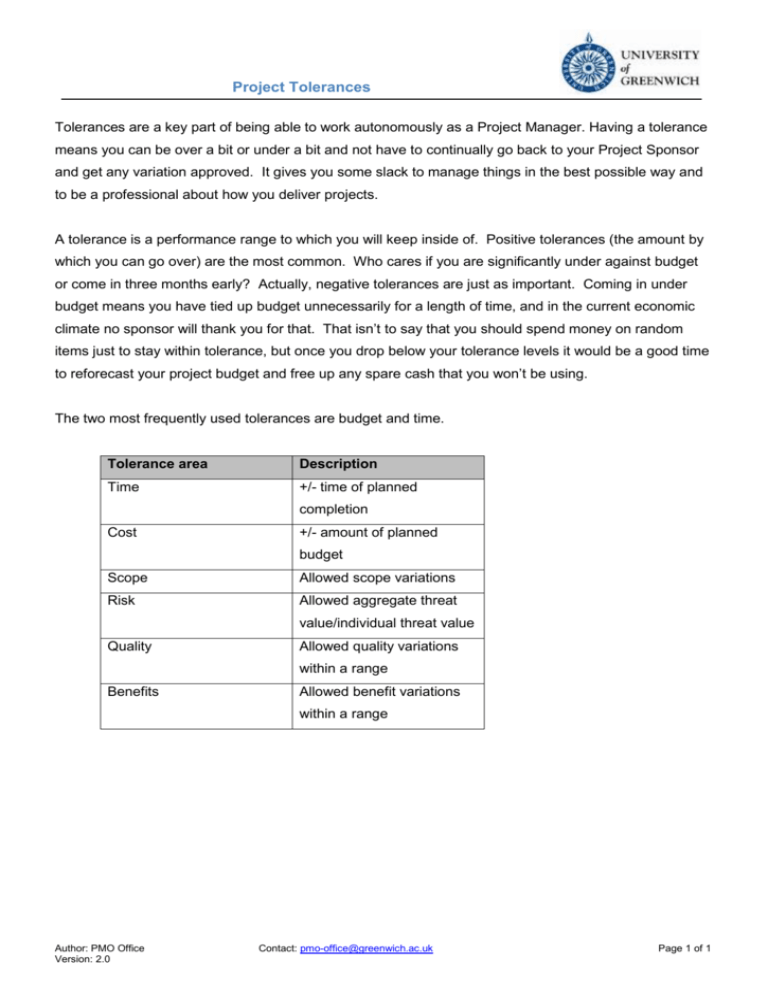
Project Tolerances Tolerances are a key part of being able to work autonomously as a Project Manager. Having a tolerance means you can be over a bit or under a bit and not have to continually go back to your Project Sponsor and get any variation approved. It gives you some slack to manage things in the best possible way and to be a professional about how you deliver projects. A tolerance is a performance range to which you will keep inside of. Positive tolerances (the amount by which you can go over) are the most common. Who cares if you are significantly under against budget or come in three months early? Actually, negative tolerances are just as important. Coming in under budget means you have tied up budget unnecessarily for a length of time, and in the current economic climate no sponsor will thank you for that. That isn’t to say that you should spend money on random items just to stay within tolerance, but once you drop below your tolerance levels it would be a good time to reforecast your project budget and free up any spare cash that you won’t be using. The two most frequently used tolerances are budget and time. Tolerance area Description Time +/- time of planned completion Cost +/- amount of planned budget Scope Allowed scope variations Risk Allowed aggregate threat value/individual threat value Quality Allowed quality variations within a range Benefits Allowed benefit variations within a range Author: PMO Office Version: 2.0 Contact: pmo-office@greenwich.ac.uk Page 1 of 1

